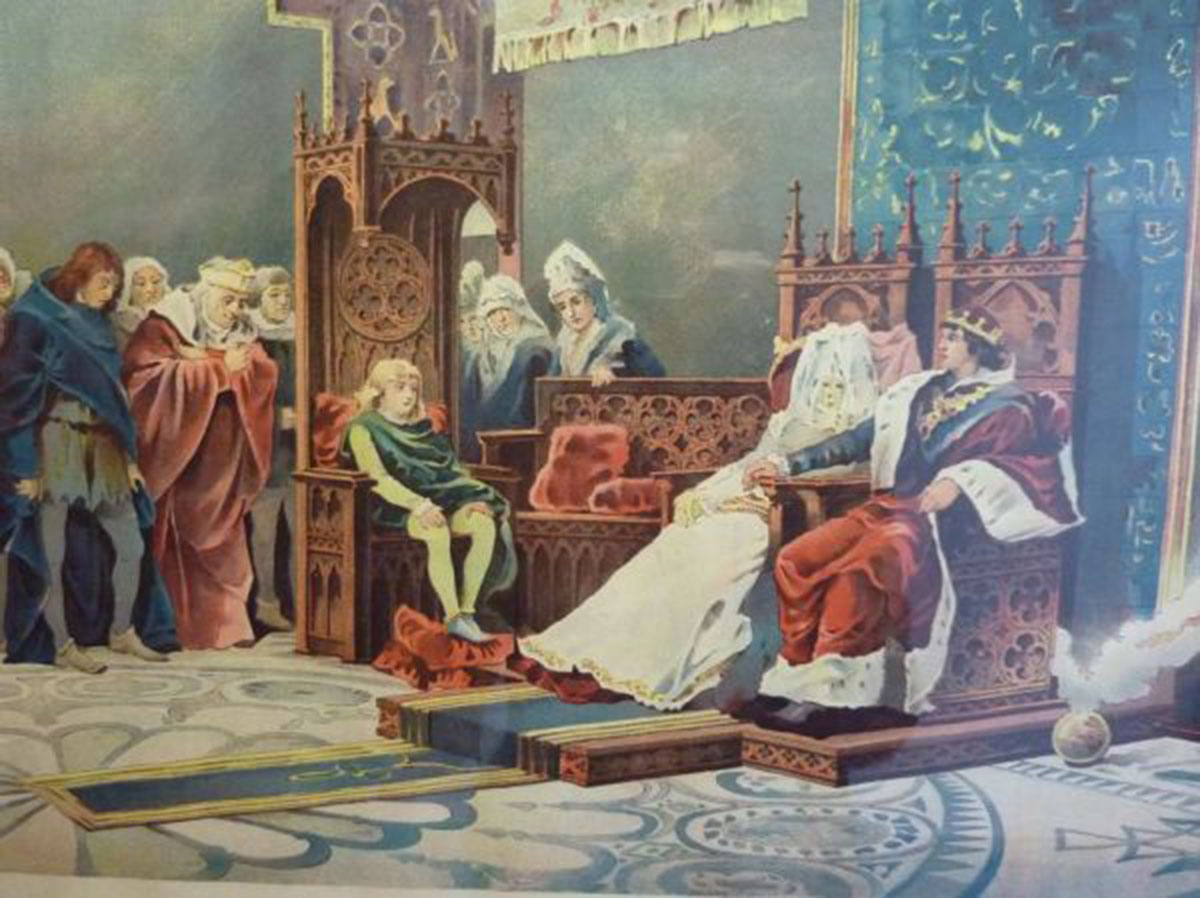Genre: Historical / Revenge Drama
Logline: Based on a true story, “Inês” delves into the depths of revenge and madness as a prince is driven to unspeakable acts after the murder of his beloved wife, whereupon ascending the throne, he forces his father’s advisers to confront the consequences of their actions, includng kissing the hand of the exhumed and enthroned corpse of the dead queen before brutally executing them.
Act 1
It’s 1340, Portugal. Spain and Portugl are in discord, with talk of war. At the time, Afonso IV, the King of Portugal, saw a great interest in entering into an alliance with Juan Manuel, the Prince of Villena, a feudal state in the kingdom of Castile located in southern Spain. Typical of the period, political disputes were often solved with marriages within the aristocracy. A marriage was negotiated between Constanza Manuel of Villena and Dom Pedro, a compassionate and beloved figure who is the future King of Portugal. Constanza left Spain along with her lady-in-waiting Inês de Castro. Pedro fell wildly in love when he first sees Inês. Inês was 15–years-old. She was very beautiful and elegant, with honey blonde hair, eyes of blue, her skin fair. She was also descended from noble Galician and Portuguese lines, and illegitimately, from the Castilian royal house.
Act 2
Inês and Pedro began a secret adulterous love affair that became public after the death of Constance of Peñafiel, Queen of Portugal, in 1345. King Afonso IV was always opposed to the relationship, and banished Inês from the court and sent her to live in exile in the castle of Albuquerque. This doesn’t stop them from seeing each other, however. After 1345, when Constanza died, they started living as a married couple and had four children together. Pedro became close with Inês’ brothers as well. Rumors began to spread that there was a plan of usurping the true heir to the throne, Dom Fernando, the son of Pedro and Constanza, in favor of the children of Inês.
Pedro’s love for Inês alarmed the nobles within the court who feared Castilian dominance of Portugal. In 1354, Pedro legally married Inês, legitimizing their children. The Portuguese nobles then pressured King Afonso IV to settle the matter. In January of 1355, when Pedro was out hunting, the king and three assassins entered the Convento de Sta Clara-a-Valha in Coimbra, where Pedro and Inês lived with their children. They found Inês with one of her children and murdered her in front of the child. At the time of her death, Inês was 29.
Upon learning that his father was resposible for the murder of his wife, Pedro declared war against him, launching the country into civil war. In 1357, two years later, King Alfonso IV died. Pedro, the only male surviving offspring, ascended to the throne of Portugal.
Act 3
Upon assuming the throne Pedro executed three orders. The first was to have a snow-white marble sarcophogas of remarkable beauty to be carved. His third order was to have the killers of Inês found and Inês de Castro to be exhumed from her grave in the church of Santa Clara. She was to be dressed in finery and propped up in the throne room. Although one killer escapes, two of the killers are found. The advisers, now facing their past actions, realize the depths of their treachery and the haunting consequences of their choices. One by one, the advisers are publicly executed, each meeting their fate in a gruesome and poetic manner. The first had his heart ripped out through his chest while he was still alive, the other had his heart ripped out from his back while still alive. Once Inês was seated beside him, Pedro forced the noblemen, the clergy, and the peasants to bow before the dead queen and kiss her hand.










